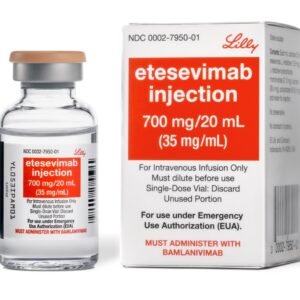esomeprazole
Function:
Alternative treatments for gastroesophageal reflux disease when oral therapies are not available. Acute bleeding gastric or duodenal ulcers of Forrest class LLC-III that cannot be taken orally.
Dosage:
For patients who cannot take oral medication, it is recommended to inject 20~40mg of this product once a day. Patients with reflux esophagitis should use 40 mg once daily; for symptomatic treatment of reflux disease, 20 mg should be used once daily. Injections are prepared by adding 5 ml of 0.9% sodium chloride solution to a vial of this product for intravenous use. The drip solution is prepared by dissolving 1 tube of this product into 100ml of 0.9% sodium chloride solution for intravenous use. The prepared injection or infusion liquid is a colorless to very slightly yellow clear solution, which should be used within 12 hours and stored below 30°C. From a microbiological point of view it is best to use it immediately. Degradation of prepared solutions is highly dependent on pH, so medicinal products must be applied according to the instructions for use. This product can only be dissolved in 0.9% sodium chloride for intravenous use. The prepared solution should not be mixed with other medications or used together in the same infusion set.
Adverse reactions:
Eyes: Occasionally: blurred vision. Ear and labyrinth: Occasionally: vertigo. Skin and subcutaneous tissue: Occasionally: dermatitis, pruritus, rash, urticaria; rare: alopecia, photosensitivity; very rare: erythema multiforme, Stevens-Johnson syndrome, toxic epidermal necrolysis (TEN). Skeletal muscle, connective tissue and bone: Rare: Arthralgia, Myalgia: Very Rare: Myasthenia. Respiratory, chest, mediastinal: Rare: bronchospasm. Digestive system: Common: abdominal pain, constipation, diarrhea, bloating, nausea/vomiting; Occasionally: dry mouth; Rare: stomatitis, gastrointestinal candidiasis. Hepatobiliary system: Occasionally: Elevated liver enzymes: Rare: Hepatitis with or without jaundice; Very rare: Hepatic failure, encephalopathy in patients with preexisting liver disease. Kidney and urinary system: Very rare: Interstitial nephritis. Blood and Lymphatic System: Rare: Leukopenia, Thrombocytopenia: Very Rare: Agranulocytosis, Pancytopenia. Immune System: Rare: Hypersensitivity reactions such as pyrexia, angioedema, and anaphylaxis/shock. Metabolic and nutritional (for medical professionals only, details available on request) disorders: Occasionally: peripheral edema; rare: hyponatremia. Nervous system: Common: Headache: Occasionally: Dizziness, paresthesia, drowsiness; Rare: Dysgeusia. Mental status: Occasionally: insomnia; rare: agitation, confusion, depression; very rare: attack, hallucinations. Reproductive system and breasts: Very rare: Gynecomastia. Administration Site and General Discomfort: Rare: Malaise, excessive sweating. Irreversible visual impairment has been reported in critically ill patients receiving intravenous racemic omeprazole, especially at high doses, but causality has not been established.
Drug contraindications:
If you are allergic to this product, it is contraindicated during lactation. Use with caution during pregnancy.
Share:
Products
Our offers
Health Classification
Let us work together to protect precious health






























